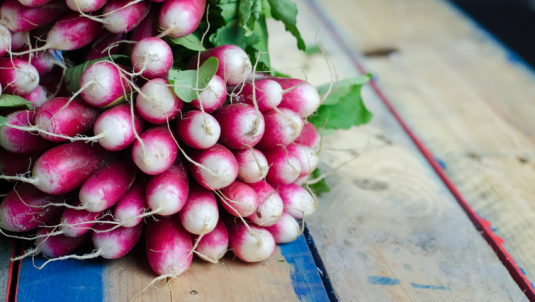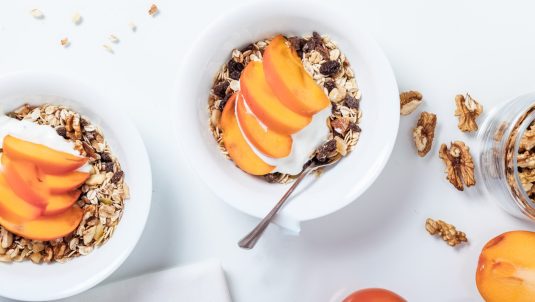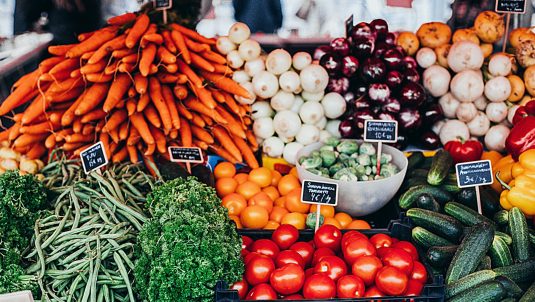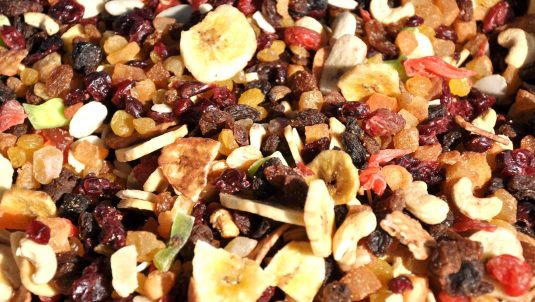What’s in a name? When it comes to the food you consume, the answer is, “A lot.” When you eat organic produce, you can feel confident about your food choices. That’s because organic produce is grown without the use of unnatural substances like pesticides, synthetic fertilizers, sewage sludge, ionic radiation, genetically modified organisms and the like.
How can you tell if the food in a grocery store is organic? You can look at its packaging. The U.S. Department of Agriculture uses three categories for identifying organic items:
- 100 Percent Organic: This designation means an item consists of only organic ingredients
- Organic: The organic label means an item is made with a minimum of 95 percent organic ingredients
- Made with Organic Ingredients: When a product has this label, it consists of at least 70 percent organic ingredients and its other 30 percent includes no GMOs
While those labels can help you find organic products when you’re food shopping, they’re not always necessary. That is, you don’t need them if you grow your own vegetables because you’re in control of how you grow your produce when you are your own gardener.
If you live in a city like NYC and you’re committed to eating organic, you’re probably intimately familiar with all the organic restaurants in New York. What you may not know, however, is that you can have your own organic garden even if your living space is small and you don’t have a yard of your own.
Find a Location
Depending on where you’re located in New York City, you might be able to join a community garden where you can grow your own vegetables in a designated plot of land. If that’s not a possibility or it’s just not something that interests you, you can still start an organic garden in your home.
The key to having your own organic garden is to make sure it’s in the right location. Ideally, you can position your garden so that it will be exposed to 6-8 hours of sunlight daily during your primary growing season. While it might sound simple enough to find a spot like that, it isn’t always that easy in New York when a neighboring building may block the sun’s light.
If your condo or apartment doesn’t have an area that gets “full” daylight during the growing season, don’t give up hope. There are some tasty vegetables that will grow with just 3-6 hours of sun daily, including:
- Arugula
- Bush and pole beans
- Beets
- Broccoli
- Kale
- Radishes
- And More!
Get Containers or Repurpose Existing Ones
Once you find a place for your organic garden, the next step is to find containers to hold your vegetable plants. If you don’t already have planters or window boxes, you’ll need to pick some up or repurpose some of your existing containers.
To keep your expenses to a minimum, consider visiting a secondhand store to buy planters or containers you can make into planters. If you buy or already have a ceramic mug or bowl that you want to make into a planter, you’ll need to carefully drill holes in the bottom so it will be able to drain when you water the plant it will hold.
Pick Up Some Organic Soil and Mulch
If you don’t already make your own compost – which is something you can also do with ease in New York City – you’ll need to buy some organic soil for your garden. Luckily, organic soil is readily available in many garden centers and most home improvement stores.
After you fill your containers with your organic soil, you’ll want to cover the top of them with organic mulch. This is an important step because mulch can stop harmful spores from getting onto the leaves of your vegetable plants. If you don’t want to buy cocoa hulls or straw, you can use shreds from an old newspaper as mulch.
Determine Whether You Need an Organic Fertilizer
If you used a nutrient-rich organic soil to fill your planters, you probably won’t need to use an organic fertilizer to help your plants grow and produce a greater yield. Look at the packaging your soil came in. If it’s lacking in essential nutrients, pick up an organic fertilizer online or at a local retailer.
Find Your Seedlings and Stagger Planting Them
With your planters all set and ready for plants, it’s time to shop for seedlings. Make sure you only choose plants that have a vibrant color that’s appropriate for the type of vegetation they happen to be. Avoid seedlings with leaves that are yellow, drooping or wilting. You should stay away from seedlings that are budding or flowering as well.
You don’t need to get all your seedlings at the same time. If you do, it’s likely they’ll all start yielding vegetables at the same time. If you’re going to grow several of the same seedlings, consider staggering them so you can enjoy your favorite vegetables over time while minimizing waste.
Maintain Your Garden
To maintain your organic garden, you need to water it regularly. Rather than watering it from overhead, consider using a soaker hose that can deliver water directly to your plants’ roots. This will help keep your plants’ leaves dry and healthy.
Maintaining your urban garden involves more than keeping it watered properly. No matter how vigilantly you tend to your garden, leaves will eventually die. Dead and fallen leaves make it a breeze for diseases to spread from one plant to another.
To prevent the spread of disease throughout your organic garden, make it a point to pick up dead and fallen leaves at least once every week. If you notice unhealthy leaves on a plant, there’s no need to wait for them to fall off. Gently pluck them off the plant instead.
Resist the temptation to put unhealthy leaves in your compost pile. Put them in the trash to avoid contaminating a future batch of compost.
Enjoy Your Vegetables
While establishing and maintaining an organic garden are fun and rewarding endeavors in their own right, eating your homegrown vegetables is even more enjoyable. Contact Organic Restaurants to let us know how your NYC organic garden turns out!
Find restaurants with organic options near you
Search by city or see restaurants close to you.






 Sign in with Google
Sign in with Google Sign in with Facebook
Sign in with Facebook